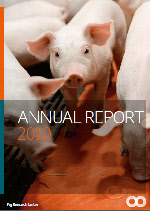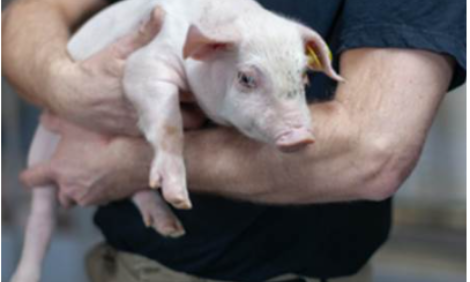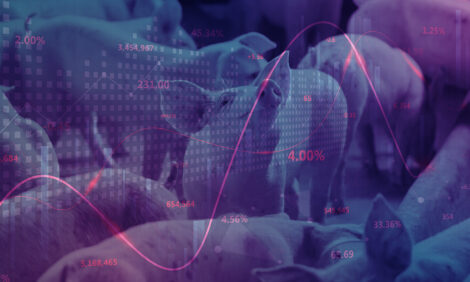



Danish Pig Research Centre: Annual Report 2010: Environmental Regulations
The 2010 annual report from the Danish Pig Research Centre outlines the latest environmental regulations in Denmark.
Stricter Ammonia Regulation
The Danish government is currently implementing the political initiatives of Green Growth.
Beginning 1 January 2011, ammonia regulations were increased for vulnerable nature areas. Regulations for certain types of nature will by then be based on the total ammonia burden from livestock production as opposed to today when evaluations are based on the excess burden of ammonia resulting from planned extensions.
Natura 2000 nature
Ammonia regulations will be changed to a maximum total burden of 0.2-0.7kg N/ha, depending on the number of livestock farms in the proximity.
Large heaths and commons
Ammonia regulations will be changed to a maximum total burden of 1kg N/ha (areas located outside Natura 2000 areas).
§ 3 areas and forests
Ammonia regulations will be changed to a maximum excess burden of 1kg N/ha in nitrogen-sensitive nature types. Under current legislation, these types of nature areas are covered by a requirement for evaluation.
This will affect particularly livestock farms close to nitrogen-sensitive §3 nature and forests. When the quota of 1kg N/ha is used up, there will be no more possibilities for development of the production facility in question.
If a producer extends his production by, for instance, 500 livestock units/finishers, the distance to §3 nature and forests must as a minimum be:
- 460 metres with general BAT requirement
- 375 metres with acidification
Consequently, some producers will be forced to set up parallel livestock sites instead of one site. This may make inroads into the effect of the new Agricultural Act.
Legislative Requirements for Animal Welfare
In order to comply with legislative requirements for animal welfare, pig producers are now allowed to implement essential modifications to existing buildings without being required to apply for environmental approval.
As a main rule, the adaptation to legislative requirements for animal welfare must take place exclusively by replacing old equipment. Renovation of a pig house as such requires environmental approval.
2013: group-housed gestating sows
Examples of implementation of changes to a pig house to meet the requirements:
- Removal of all equipment in the facility
- Installation of pen partitions
- Replacement of a small percentage of the slatted floor area with drained floor elements
- 10 to 20 per cent reduction in the number of sow place units as a consequence of increased space requirements for group-housed gestating sows.
A pig producer must not include existing buildings to compensate for reduced production capacity in the gestation facility.
2015: solid or drained floor
Before 1 July 2015, fully slatted floor in pig houses must be converted to solid or drained floor. There are several ways of doing this:
- Placing mats or boards in part of the pen to form a solid lying area
- Casting parts of the slatted floor in the pen
- Replacing and laying concrete elements with solid or drained floor in parts of the slatted floor area of the pen.
These changes will generally not release approval requirements as they are environmental improvements with no adverse consequences for neighbours, landscape or environment.
Changes to Buildings
A series of schemes for reporting changes to production units is expected to be adapted in January 2011, whereby cases that have no environmental importance will no longer be included in the environmental approval procedure. Initially, the schemes are intended to concern manure storage facilities, silage locations and changes in certain types of animals if the number of livestock units is not increased.
It will furthermore be possible to make changes to buildings (including extensions of the pig houses) following animal welfare requirements. This is in particular interesting for sow producers as sows must be group-housed during gestation by 2013. The intention is that a pig producer can report made changes to his buildings within a certain framework without a new environmental approval being required. The environmental impact must remain unchanged, and the number of sows must therefore be reduced by five per cent as changes in housing systems increase ammonia losses.
BAT Standard Conditions
The new BAT standard conditions are so clear and precise that applicants beforehand are able to read and assess the BAT requirements they need to comply with when applying for environmental approvals. This will simplify review processes for environmental approvals of livestock farms, which is a very positive development.
There is now generally a good technical balance in the handling of the BAT concept.
| Total BAT costs amount to DKK8-11 per produced pigs, distributed as follows: | |
| Finishers: DKK5-8 per pig Weaners: DKK1.30 per pig Sows: DKK50 per sow/year |
Further Reading
| |
- | Go to our previous article on this report by clicking here. |
September 2011








